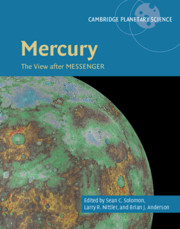Refine listing
Actions for selected content:
17002 results
13 - Cosmological Context
-
- Book:
- The Physics of Gamma-Ray Bursts
- Published online:
- 17 December 2018
- Print publication:
- 13 December 2018, pp 498-518
-
- Chapter
- Export citation
plates
-
- Book:
- The Physics of Gamma-Ray Bursts
- Published online:
- 17 December 2018
- Print publication:
- 13 December 2018, pp 581-596
-
- Chapter
- Export citation
14 - Other Topics
-
- Book:
- The Physics of Gamma-Ray Bursts
- Published online:
- 17 December 2018
- Print publication:
- 13 December 2018, pp 519-528
-
- Chapter
- Export citation
6 - Hadronic Processes
-
- Book:
- The Physics of Gamma-Ray Bursts
- Published online:
- 17 December 2018
- Print publication:
- 13 December 2018, pp 221-227
-
- Chapter
- Export citation
Frontmatter
-
- Book:
- The Physics of Gamma-Ray Bursts
- Published online:
- 17 December 2018
- Print publication:
- 13 December 2018, pp i-iv
-
- Chapter
- Export citation
7 - Basic Theoretical Framework
-
- Book:
- The Physics of Gamma-Ray Bursts
- Published online:
- 17 December 2018
- Print publication:
- 13 December 2018, pp 228-272
-
- Chapter
- Export citation
References
-
- Book:
- The Physics of Gamma-Ray Bursts
- Published online:
- 17 December 2018
- Print publication:
- 13 December 2018, pp 529-572
-
- Chapter
- Export citation

Mercury
- The View after MESSENGER
-
- Published online:
- 10 December 2018
- Print publication:
- 20 December 2018
5 - The Mysterious Periodicities of Saturn
-
-
- Book:
- Saturn in the 21st Century
- Published online:
- 13 December 2018
- Print publication:
- 06 December 2018, pp 97-125
-
- Chapter
- Export citation
Copyright page
-
- Book:
- Saturn in the 21st Century
- Published online:
- 13 December 2018
- Print publication:
- 06 December 2018, pp vi-vi
-
- Chapter
- Export citation
3 - The Interior of Saturn
-
-
- Book:
- Saturn in the 21st Century
- Published online:
- 13 December 2018
- Print publication:
- 06 December 2018, pp 44-68
-
- Chapter
- Export citation
14 - The Future Exploration of Saturn
-
-
- Book:
- Saturn in the 21st Century
- Published online:
- 13 December 2018
- Print publication:
- 06 December 2018, pp 417-441
-
- Chapter
- Export citation
6 - Global Configuration and Seasonal Variations of Saturn’s Magnetosphere
-
-
- Book:
- Saturn in the 21st Century
- Published online:
- 13 December 2018
- Print publication:
- 06 December 2018, pp 126-165
-
- Chapter
- Export citation
10 - Saturn’s Seasonally Changing Atmosphere
-
-
- Book:
- Saturn in the 21st Century
- Published online:
- 13 December 2018
- Print publication:
- 06 December 2018, pp 251-294
-
- Chapter
- Export citation
Index
-
- Book:
- Saturn in the 21st Century
- Published online:
- 13 December 2018
- Print publication:
- 06 December 2018, pp 442-448
-
- Chapter
- Export citation
1 - Introduction to Saturn in the 21st Century
-
-
- Book:
- Saturn in the 21st Century
- Published online:
- 13 December 2018
- Print publication:
- 06 December 2018, pp 1-4
-
- Chapter
- Export citation
8 - Saturn’s Ionosphere
-
-
- Book:
- Saturn in the 21st Century
- Published online:
- 13 December 2018
- Print publication:
- 06 December 2018, pp 196-223
-
- Chapter
- Export citation
2 - The Origin and Evolution of Saturn, with Exoplanet Perspective
-
-
- Book:
- Saturn in the 21st Century
- Published online:
- 13 December 2018
- Print publication:
- 06 December 2018, pp 5-43
-
- Chapter
- Export citation
9 - Saturn’s Variable Thermosphere
-
-
- Book:
- Saturn in the 21st Century
- Published online:
- 13 December 2018
- Print publication:
- 06 December 2018, pp 224-250
-
- Chapter
- Export citation
11 - The Global Atmospheric Circulation of Saturn
-
-
- Book:
- Saturn in the 21st Century
- Published online:
- 13 December 2018
- Print publication:
- 06 December 2018, pp 295-336
-
- Chapter
- Export citation
